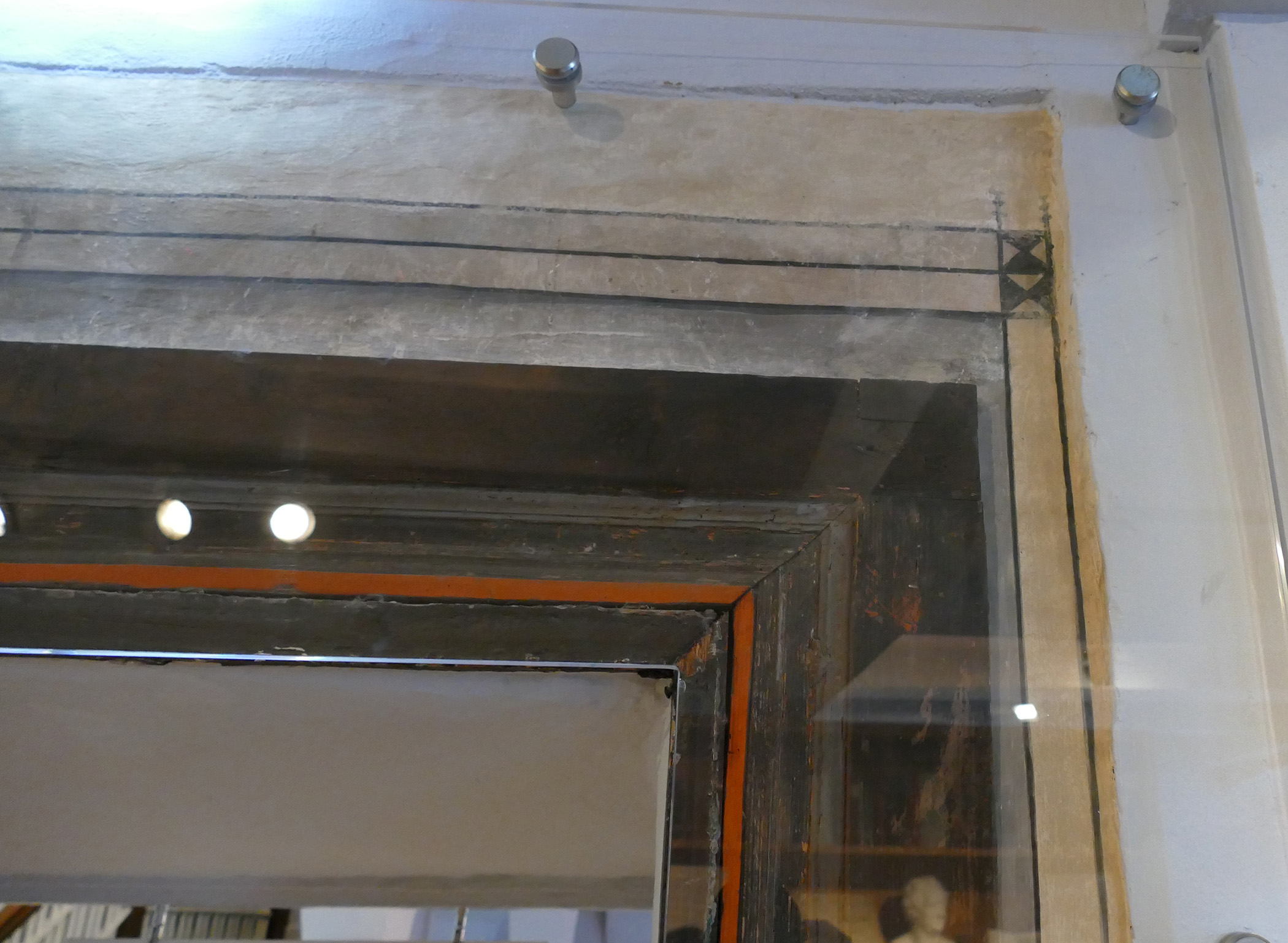
Zeitfenster im Museum Hameln
Windows into the past

Scroll down to read the English text
Türrahmen von 1589
Die Tür dieses Raums entstand um 1589. Nur an ihr ist die renaissancezeitliche Gestaltung der Wände und Decken aus dem 16. Jahrhundert erhalten geblieben. Unmittelbar um die Tür läuft eine dunkelgraue und zinnoberrote Fassung. Diese Farben finden sich auch an den Fenstern in diesem Raum und an der Decke der Diele im Erdgeschoss. Zudem wird die Tür abschließend durch eine Grisaille-Verzierung umrahmt. Grisaille-Verzierungen sind Malereien, die auf der Schattenwirkung beruhen und ausschließlich in Grau, Weiß und Schwarz ausgeführt werden. Auch sie finden sich als florale Muster in weiteren Räumen des Gebäudes wieder. So vermittelt die Tür einen Eindruck davon, wie das Leist-Haus Ende des 16. Jahrhunderts von innen ausgesehen haben muss.
Sie zeugt aber auch von den großen und aufwendigen Umbauten um 1589. Diese wurden vom damaligen Hausherrn Gerdt Leist in Auftrag gegeben und lassen seinen Wohlstand und seine hohe soziale Stellung erkennen. Die Familie Leist war eine seit dem 13. Jahrhundert in Hameln ansässige Kaufmanns- und Händlerfamilie, der einige Lehn im Umkreis der Stadt gehörten. Sie profitierten finanziell vom Handel mit Getreide auf der Weser. Bei den Leists handelte es sich aber auch um angesehene Bürger Hamelns. Aus ihren Reihen gingen Mitglieder des Stadtrats und Bürgermeister hervor. Auch Gerdt Leist übte diese Ämter aus. Offenbar verfügte er über das Selbstbewusstsein und die finanziellen Mittel, sein Haus entsprechend aufwändig und repräsentativ zu gestalten.

Detailaufnahme: polychrome Verzierungen des Holzes und umlaufende Grisaille-Malerei
Detail: multi-colored decoration of the frame and grisaille-painting
© Museum Hameln
Door frame from 1589
The door of this room was built around 1589. It is only here that the Renaissance design of the walls and ceilings from the 16th century has been preserved. A dark gray and vermilion frame runs directly around the door. These colors can also be found on the windows in this room and on the ceiling of the hallway on the ground floor. In addition, the door is then framed by a grisaille ornament. Grisaille decorations are paintings that are based on the shadow effect and are executed exclusively in gray, white and black. They can also be found as floral patterns in other rooms of the building. The door gives an impression of what the Leist House must have looked like from the inside at the end of the 16th century.
But it also bears witness to the large and complex renovations around 1589. These were commissioned by the then landlord Gerdt Leist and show his wealth and high social position. The Leist family was a merchant and trader family that had been resident in Hamelin since the 13th century and owned several fiefs in the vicinity of the city. They benefited financially from the trade in grain on the Weser. The Leists were also respected citizens of Hamelin. Members of the city council and mayors emerged from their ranks. Gerdt Leist also held these offices. Apparently he had the self-confidence and the financial means to design his house appropriately lavishly and representative.
